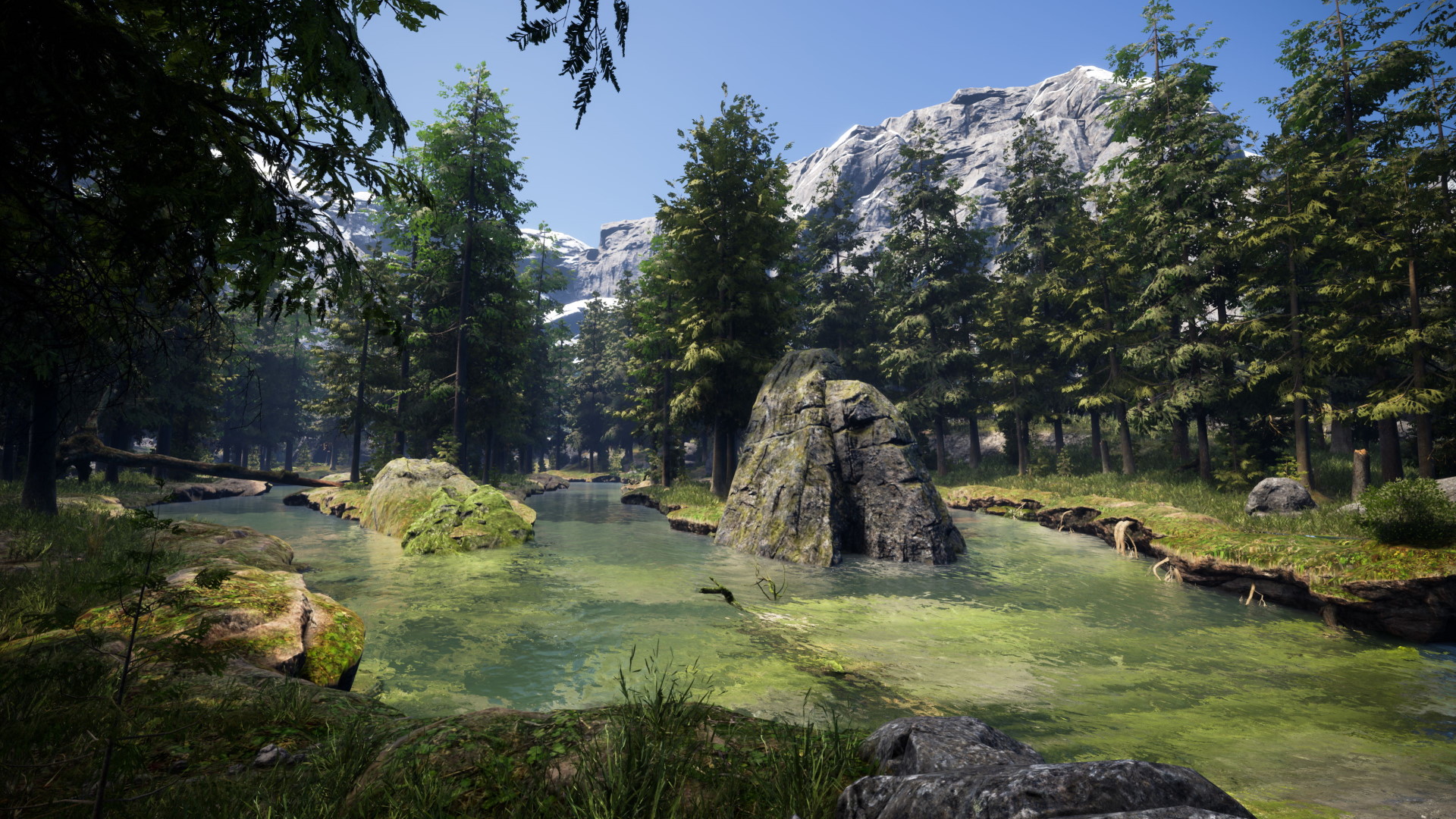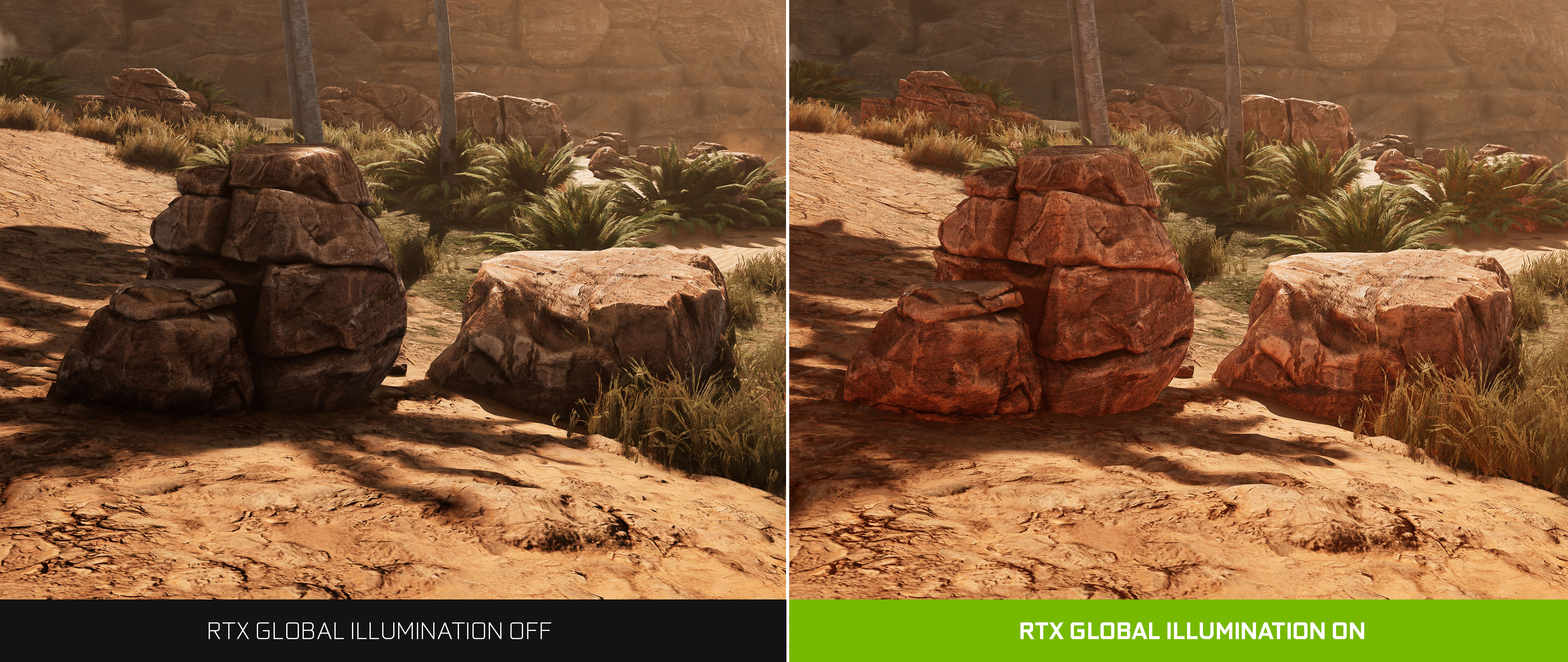ICARUS Featuring NVIDIA DLSS and RTX Global Illumination Out Now
In ICARUS, the new co-op survival game by Dean Hall and RocketWerkz, players explore a savage alien wilderness in the aftermath of terraforming gone wrong. Survive long enough to mine exotic matter before returning to orbit, then explore and conquer new biomes of greater risk and greater reward. You must meet your deadline for extraction though, or face being left behind forever.
ICARUS will be the first game to utilise RTXGI Infinite Scrolling Volumes to apply Global Illumination in an open-world game environment.
Players can now explore ICARUS’ terraformed alien wilderness on a GeForce RTX GPU, desktop PC, or laptop for an even more immersive experience with incredibly realistic RTX Global Illumination lighting, and optimize performance by activating NVIDIA DLSS.
ICARUS Available Now With RTX Global Illumination
NVIDIA and RocketWerkz have collaborated to bring the truly incredible RTX Global Illumination (RTXGI) to ICARUS. This game-changing technology realistically simulates the natural illumination of indoor and outdoor scenes from the sun and moon, and can also simulate the bouncing of light from surface to surface until the light rays dissipate, which was previously impossible at high frame rates in a real-time video game.
Using the power of RTXGI, you can chop down a tree and see light naturally illuminate the previously darkened forest floor. If you build a house, light will flood through windows and bounce from surface to surface. And as in reality, light will inherit color from surfaces, so for instance, light bouncing from a red wall to a white wall will now cast a red tinge on the white surface.
Previous-generation rasterized solutions were extremely limited, and prior ray tracing solutions had a high performance cost while at most managing one limited lighting bounce. RTXGI, in contrast, is fully dynamic with infinite light bounces, which is made possible in part by the complex ray tracing workloads being calculated across multiple frames each second to create a high quality multi-bounce lighting cache with visibility information. If nothing changes in the scene, the information’s already available in the cache. If something changes, update the necessary details. And by calculating across multiple frames, the cost is spread, making RTXGI highly performant in comparison to all other ray-traced global illumination solutions.
Best of all, developers can add RTXGI with ease thanks to the release of an Unreal Engine 4 plugin, which can be freely downloaded from the RTXGI website.
To support ICARUS’ massive biomes, and the massive locales of other open world games, a new RTXGI feature called Infinite Scrolling Volumes has been developed, and is being launched alongside ICARUS. As players move through ICARUS’ environment, lighting is updated in a large volume around the player’s viewpoint, to a range where detail can’t be perceived, reducing memory requirements and increasing performance. Without Infinite Scrolling Volumes, you’d be required to calculate and store the entire world’s lighting in the cache, which simply isn’t feasible.
When you enable RTXGI planet-side in ICARUS, or on the game’s space station, you’ll see incredibly lifelike lighting, far beyond the quality of any other global illumination solution you’ve experienced in a game before now.
With a GeForce RTX GPU, desktop PC, or laptop, you can experience RTXGI thanks to our dedicated RT Cores. And of course, you can enable NVIDIA DLSS for even faster performance when scavenging and building in ICARUS’ incredible world.
Note: Ray tracing in ICARUS is only available through the DX12 runtime. At the time of this writing you can choose this option when launching the game, but should this change, adding -dx12 to the game’s Launch Options field will also accomplish this.
ICARUS With NVIDIA DLSS: Boost Performance By Up To 80%
ICARUS takes full advantage of NVIDIA DLSS to boost performance. Powered by AI rendering technology and dedicated Tensor Core AI processors found exclusively on GeForce RTX GPUs, DLSS speeds up frame rates by up to 80% while still providing image quality similar to native resolution. Optimize gameplay without losing detail for the definitive ICARUS PC experience.
With a GeForce RTX graphics card, desktop, or laptop, you can activate NVIDIA DLSS in just a few clicks:
- Press Escape and click SETTINGS in the lower right corner
- Click the DISPLAY tab
- Scroll down to select your desired DLSS Mode and DLSS Sharpness value
ICARUS On GeForce NOW
Don’t forget, you can also play ICARUS on GeForce NOW, NVIDIA’s cloud gaming service. With GeForce NOW, gamers can play their favorite already-owned PC titles from popular digital stores like Steam, Ubisoft Connect, Epic Games Store and GOG. Founders, Priority, and RTX 3080 members also get priority access to our cloud gaming servers and extended session lengths for longer playtimes. Head to GeForceNOW.com to learn more about the service, including the new, highest-performance GeForce NOW RTX 3080 membership.
ICARUS Out Now
From the creator of the legendary survival game DayZ, Dean Hall and his team at RocketWerkz have furthered the co-op survival genre with their latest title ICARUS. Think you got what it takes to survive the alien wilderness? Play ICARUS and see if you can make it back to orbit—available now.

